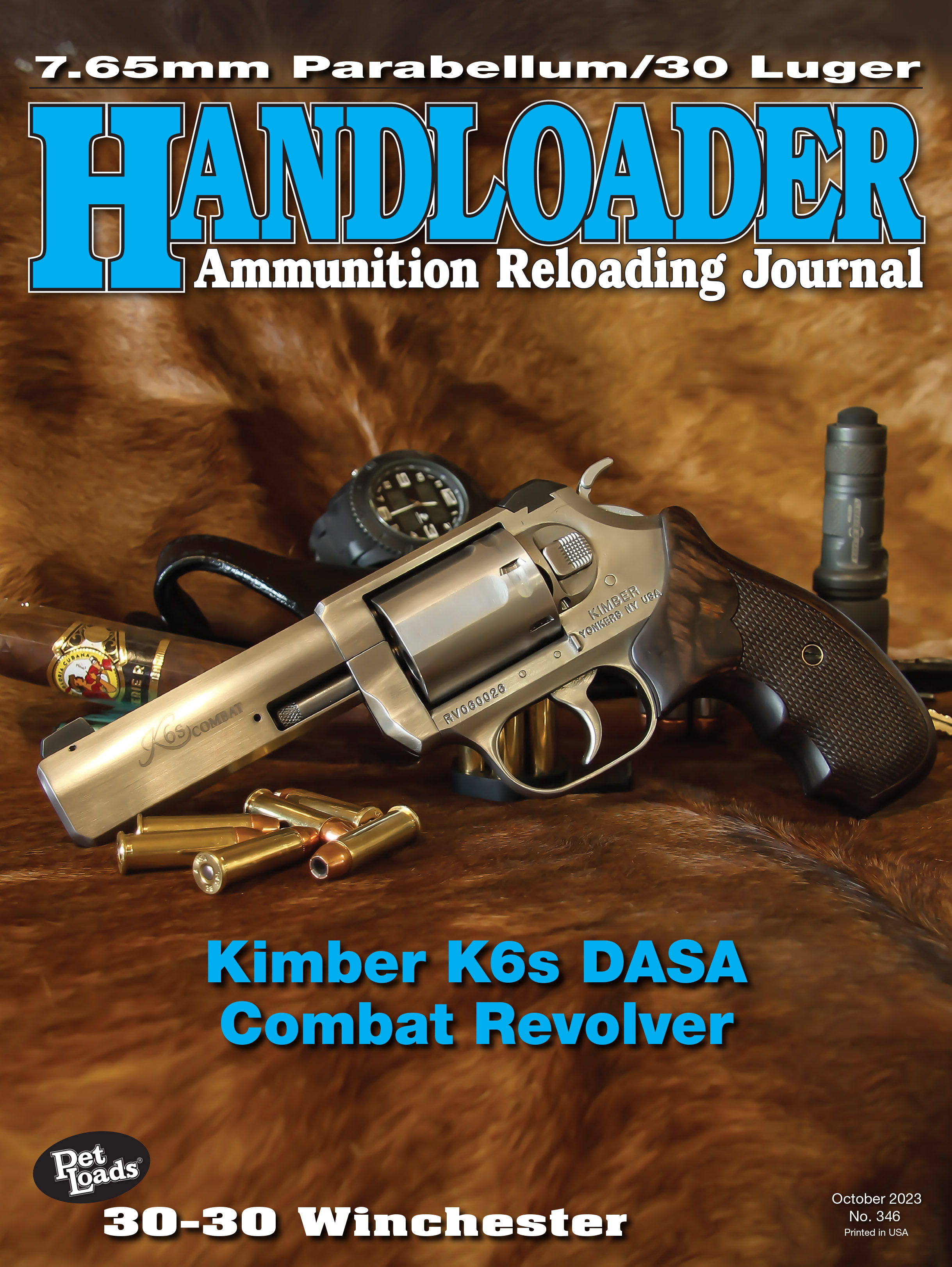38 Super & 9mm Largo
The Same, But Different
feature By: Mike Venturino - Photos by Yvonne Venturino | October, 23
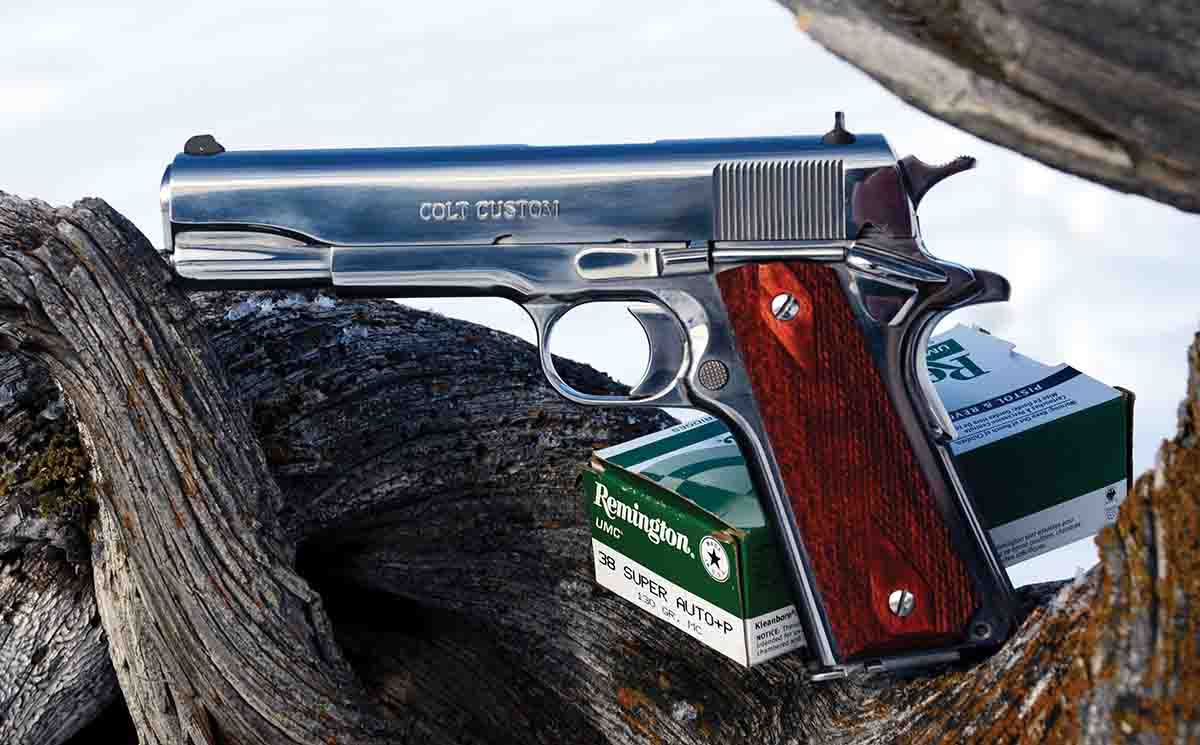
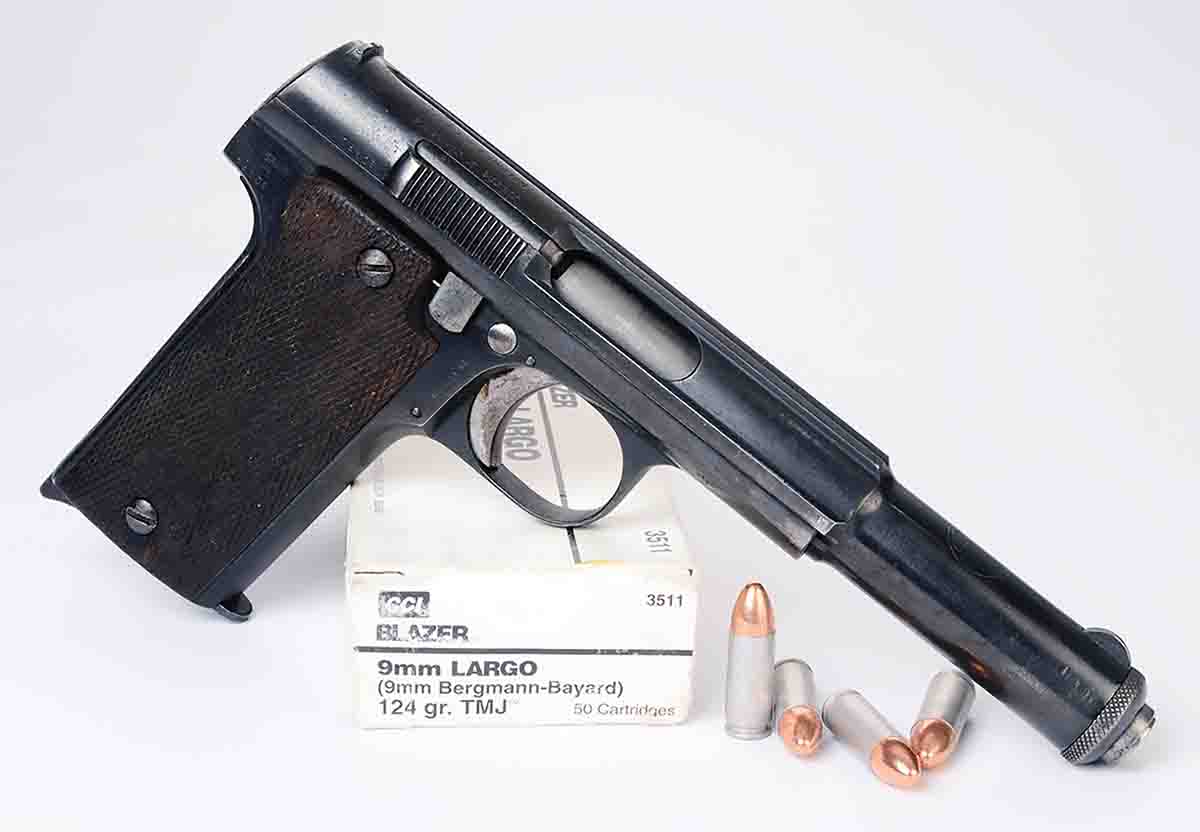
The 38 Super did not take off like a rocket in regard to popularity in the U.S. Mostly in those days we were still a nation predominantly of revolver shooters. However, there are some nations on this planet that forbid civilians from having handguns in the same chambering used by their military forces. Several of those countries were south of our border and there, 38 Super pistols became fairly popular. This was the reason my current 38 Super semiauto was developed, which I’ll return to shortly.
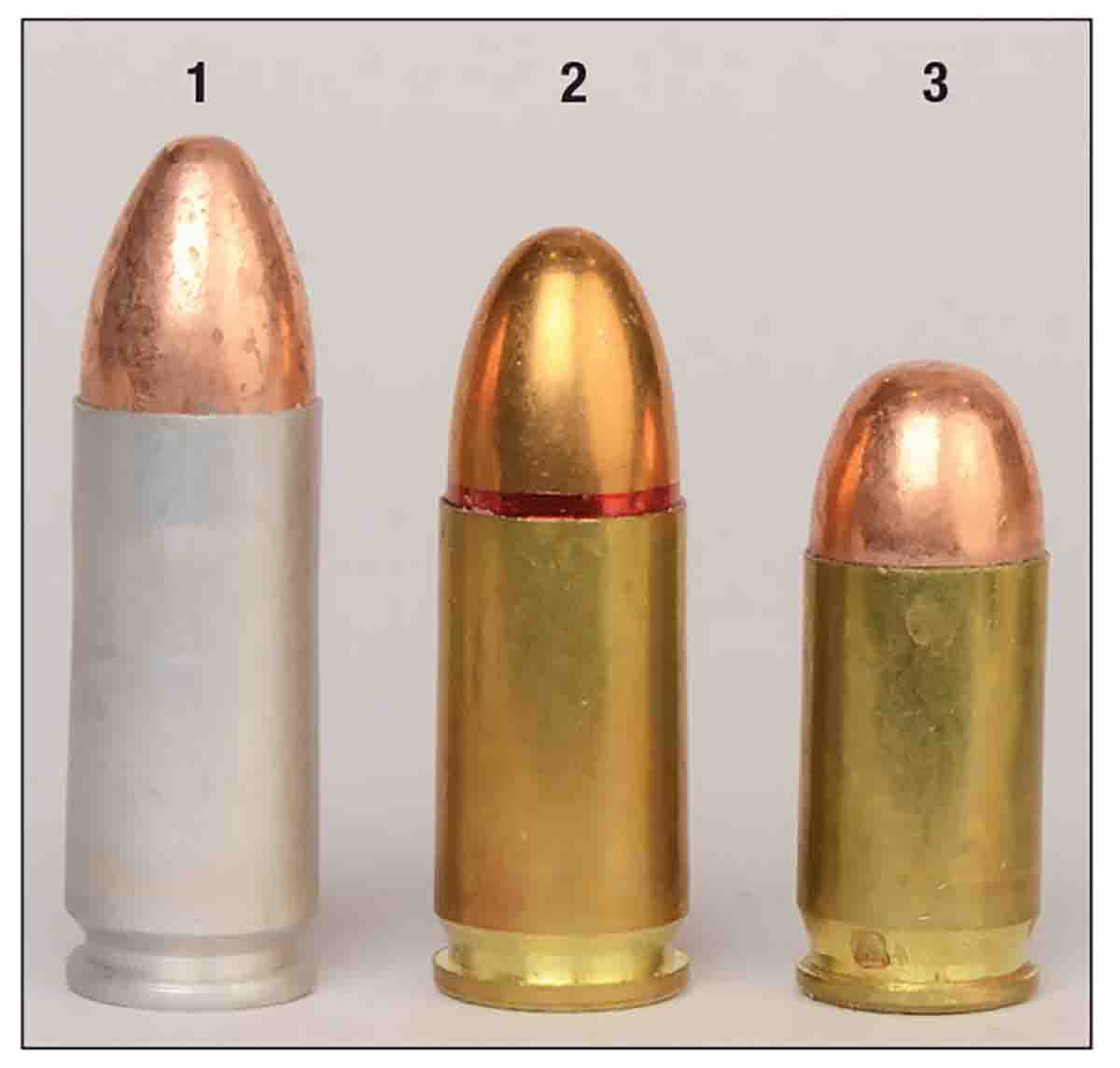
Then something else happened to spur a renewal of interest for 38 Super. Despite the good quality of Colt 1911 38 Super pistols and some of the 1911 knockoffs from Spain, they never developed a reputation for fine accuracy. Personally, I experienced this myself back in the 1970s upon trading for a Star 1911 type 38 Super. It just never grouped as expected either with factory ammunition or my handloads. I remember long ago reading an article in these pages about the poor 38 Super accuracy reputation. The Speer Reloading Manual #14 related that the article was written by Bill Corson in Handloader No. 71 (January - February 1978). Essentially, the finding was the poor accuracy was caused by the semi-rim design of 38 Super cartridge cases. Rimless cases headspacing on case mouths cured the problem and the Missouri cartridge case manufacturer Starline began making rimless 38 Super brass with COMP (competition) as part of its headstamp.
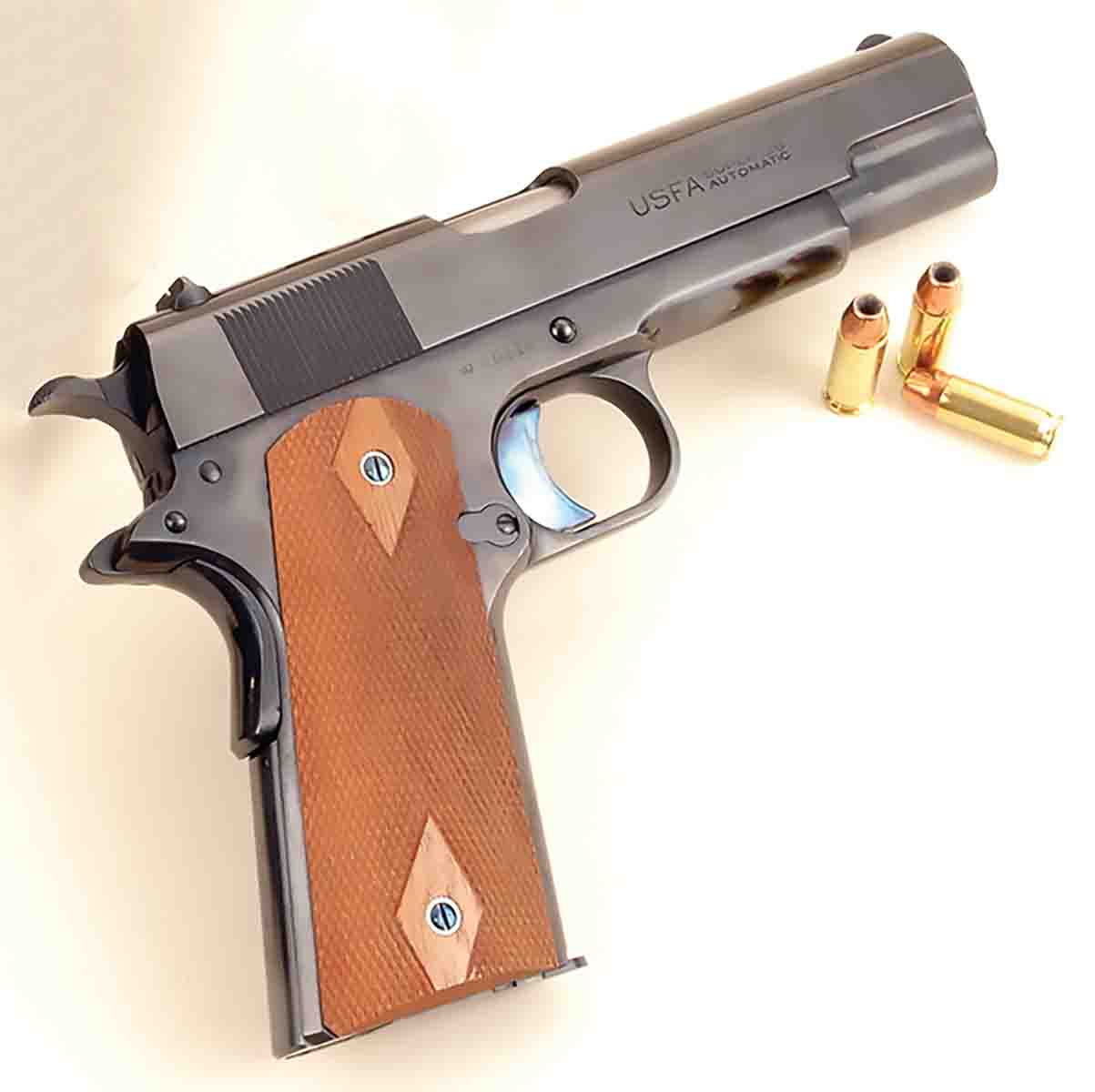
The bullet diameter was .355 inch with a 135-grain FMJ at 1,100 fps for their military ballistics according to Military Small Arms of the 20th Century by Hoggs and Weeks. My copy of Cartridges of the World 9th Edition lists factory loads as having 125-grain FMJ bullets at 1,120 fps.
The reputation of the Astra Model 1921 has several facets. Some are true and others are not. True; the recoil spring is immensely stiff because the pistol is of simple blowback design. Even at my age, I’m not considered a weakling, but retracting the Astra’s slide is just plain difficult. What may be true in some instances is that Astra 400s can use 38 Colt Auto rounds. I’ve read that and my Astra’s slide even has the stamp “9mm (.38).” However, it will not function with 38 Colt Auto cartridges. I tried it with an old 38 Auto factory load. It chambered and fired but would not extract. It required punching out with a cleaning rod. Another facet that is true, but likely should be ignored is that the Model 1921 will safely digest all sorts of 9mm cartridges such as 9mm Luger and even 380 Auto. I tried a few rounds of 9mm Luger and they did function but the case is not headspacing on case mouth as normal but is held by the pistol’s extractor. A steady diet of such monkeyshines could damage said extractor – again something read in my research.
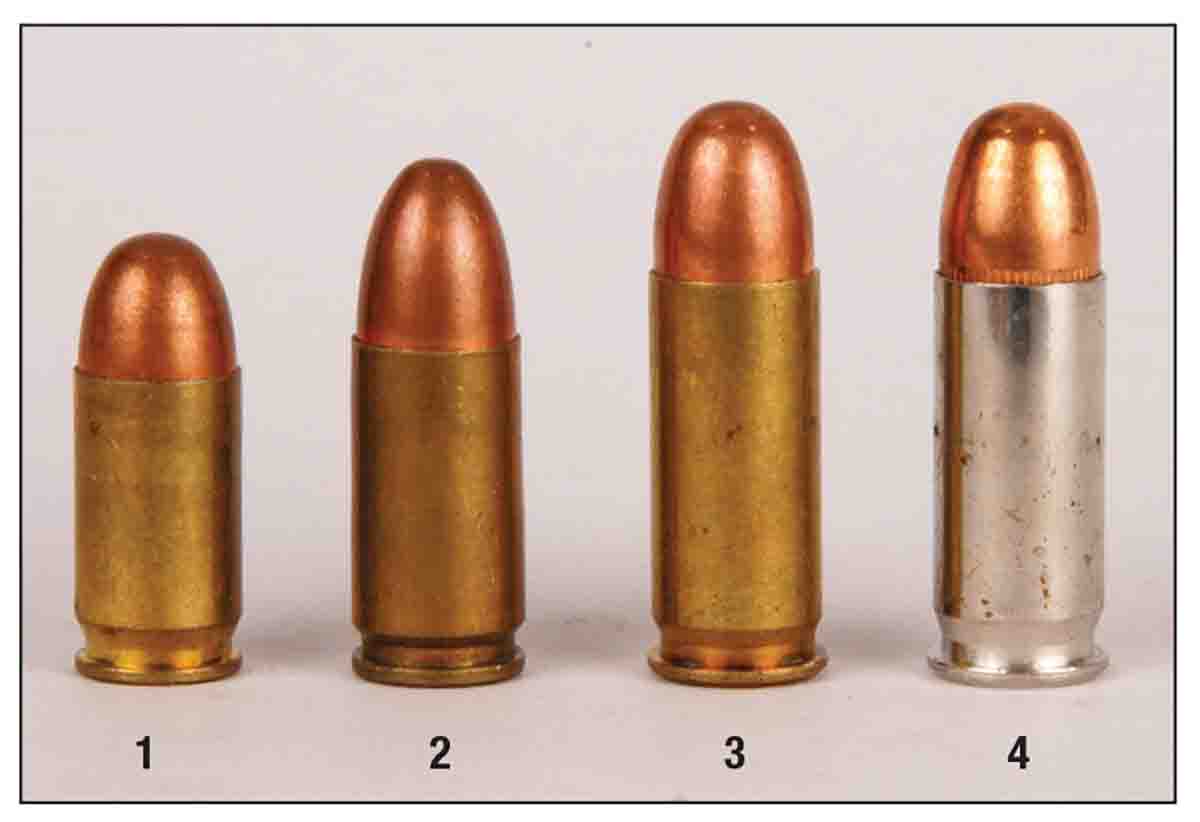
In the store’s used handgun case set what appeared to be what I desired. It was not. Instead of nickel-plated, it was high-polished stainless steel and instead of chambering 45 ACP, it was a 38 Super. I bought it anyway. (I was an FFL holder in those days so I could buy when out of state.) Its serial number had the odd prefix of ELCEN which I discovered meant it was part of a special run by Colt for a distributor with the aim of selling them south of the border. There were other versions such as ELCORONEL AND ELGENERAL with varying degrees of decoration. The ELCENs were the plainest. This Colt pistol is stamped COLT CUSTOM on the slide’s left side, has a straight mainspring housing as with early 1911s and has much better sights than off-the-shelf Colt Government Models in that they set high and have white dots front and rear. Grips are checkered rosewood.
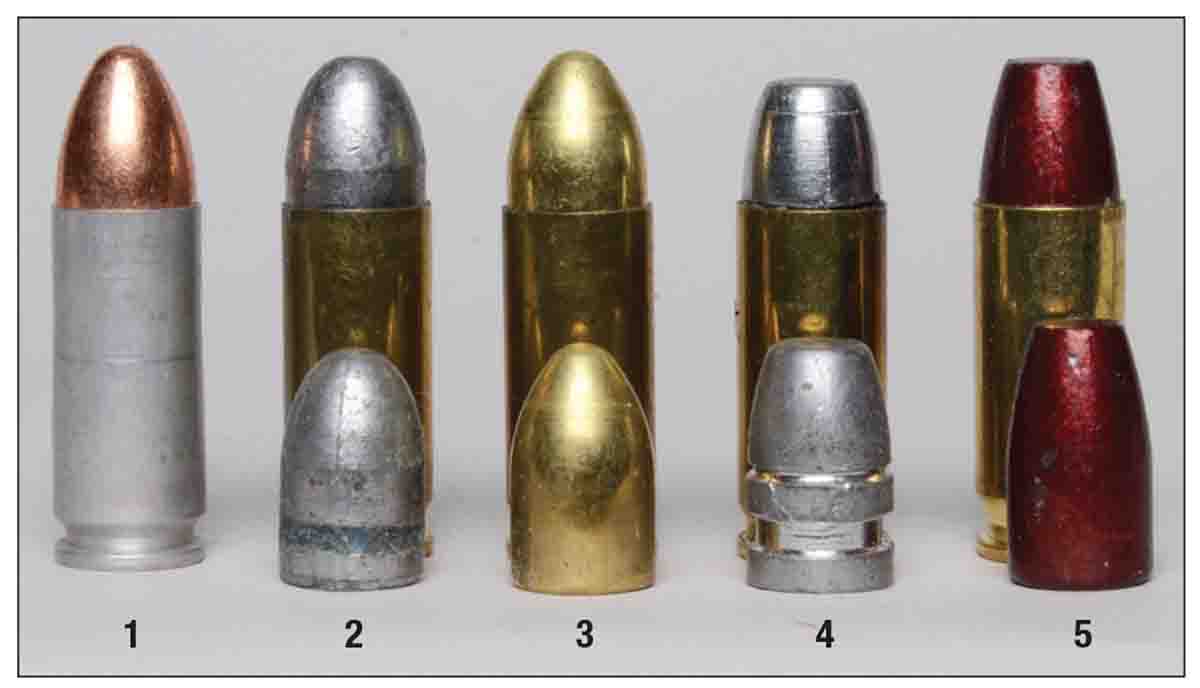
In searching for handloading data, I found only one source in modern manuals. According to Speer’s Reloading Manual #14 in the 9mm Largo’s data section maximum pressures for their loads are 30,000 psi. A few pages further gives data for 38 Super+P. Maximum pressures there are 33,000 psi. My logical estimation was that if I held 38 Super handloads to Speer’s starting load powder charges and using Starline COMP cases, the loads would be suitable to both semiautos.
A fact not commonly known is that the original FMJ bullet diameter for 38 Super at its inception in 1929 was .356 inch. Try finding such jacketed bullets today. Regardless, it’s no big loss as only .355-inch jacketed bullets are all that are listed in today’s manuals. The Lyman 51st Edition Reloading Handbook also supplies some cast bullet data. For my work with dual-purpose 9mm Largo/38 Super handloads, my bullet choices were as follows: 124-grain, .355-inch FMJs by Zero Bullet Company and Oregon Trail Bullet Company’s 124-grain cast roundnose at .356 inch. Also used were Missouri Bullet Company’s coated cast bullets weighing 147 grains. These were truncated cone-shaped and sized at .356 inch. The only bullet cast by myself for this project was RCBS No. 38-140CM, nominally meant for cowboy action competition, i.e. light loads in revolvers. These RN/FPs were cast of Linotype alloy, sized to .356 inch and lubed with SPG. The harder alloy reduced bullet weight to 135 grains.
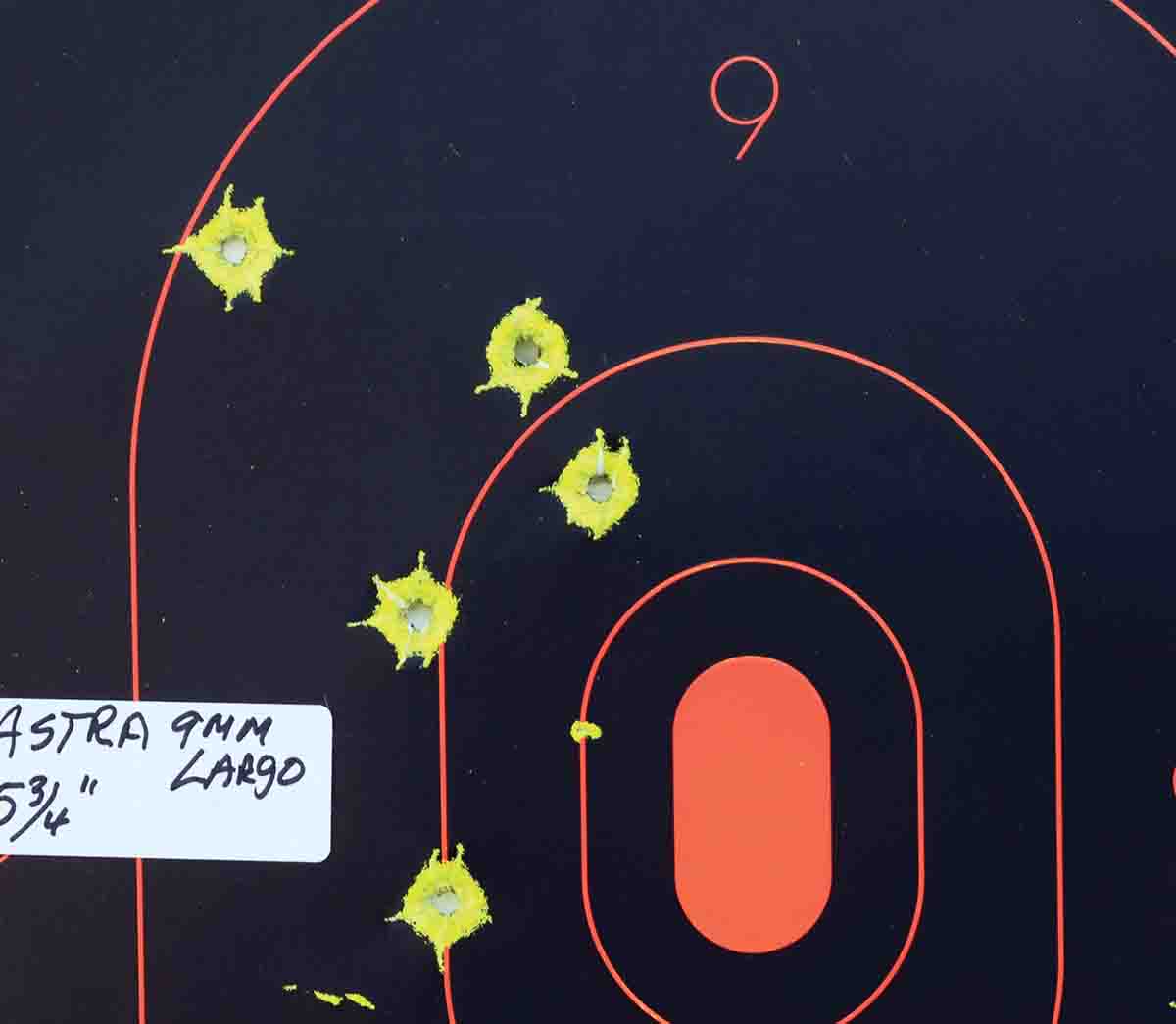
Now a word on accuracy; the Astra was one of the most difficult handguns to shoot with any degree of precision in all of my lifelong experience. My Lyman Trigger Pull Gauge maxes out at 12 pounds. The Astra’s pull was enormous; the Lyman gauge would not measure it. Also, its sights are less than rudimentary. My eyes are in their mid-70s now and the Astra’s front sight is a barely visible nub with the rear being likewise a tiny notch. There is no way to adjust them. Trying to shoot groups from sandbag rest with the Astra was just shy of an exercise in futility. The best groups I was able to print were all nearly 6 inches. However, I could place hits on my large steel plates at 25 yards easier by just pointing the Astra and jerking the trigger.
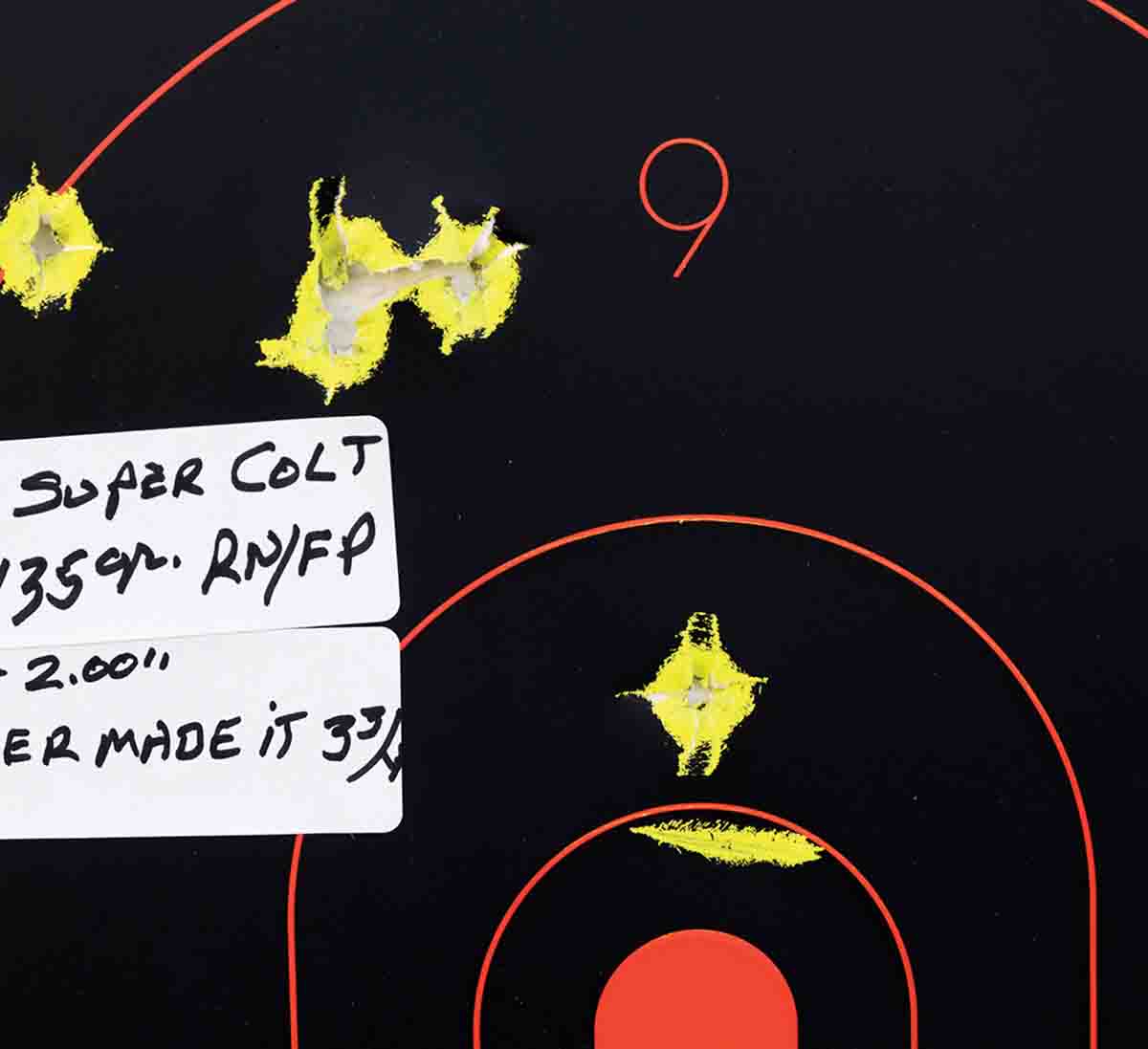
To finish this, I’d say this project was a “Beauty and the Beast” sort of thing. The Colt is what Americans have come to expect from well-made semiautos of any chambering while the Astra is a good example of a product from a nation with lesser firearms manufacturing experience in 1921. It is crude and rough around the edges, but it did fire every time the trigger was pulled. Conversely, at the end of this project, I fired-off my remaining handloads with the Colt ELCEN and hit my steel targets’ 3.38-inch paddles more than they were missed.
.jpg)


